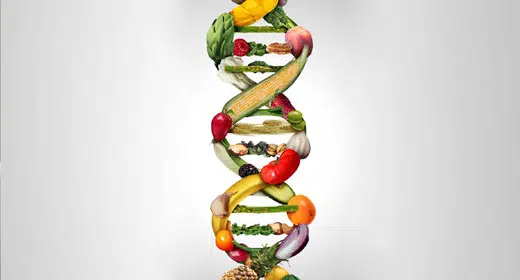by Ocean Robbins: Let’s talk about sex…
We are proud to announce a new partnership with John and Ocean Robbins and the Food Revolution to bring our readers Summits, Seminars and Masterclasses on health, nutrition and Earth-Conscious living.
Sign Up Today For the Healthy Brain Masterclass
Before you get too excited, I want to make it clear that I’m referring to the phenomenon of sexual reproduction. That’s the incredibly cool process that creates variety, diversity, and new life.
Humans have understood this process for a long time. I’m not just referring to making more human babies, but engaging in selective breeding of plants, as well. Cross-pollination, hybridization, and replanting of specimens with a particularly desirable trait (sweeter fruit, more resistant to frost, etc.) have led to us consuming a diet that is almost entirely different from that of our Paleolithic ancestors.
While humans have made our mark on the flora of the planet, until about 30 years ago we did so according to certain rules. The main one being, we bred individuals of the same species together. When we broke that rule (say, in crossing horses and donkeys to create mules), the new organism was typically unable to reproduce.
We didn’t engineer romances across plant species because, well, we couldn’t (you might call this limitation the “Tevye Principle,” after the protagonist in the musical Fiddler on the Roof, who pondered, “… a bird may love a fish, but where would they build a home together?”).
With the advent of genetic modification (also known as genetic engineering) technology, however, not only can fish date birds, they can also make babies with tomatoes. If this seems like a questionable idea to you, you’re not alone. But while many people have been raising questions about the short- and long-term safety of this technology, agribusiness has created and disseminated GMO products at what, from an evolutionary perspective, is nothing short of lightning speed.
Genetically Modified Food Examples
GMOs have been around since the 1990s. You might even remember when they were first introduced in the US in 1994, with the debut of the Flavr Savr tomato. It had been genetically engineered to slow its ripening process, delaying softening and rotting, increasing its shelf life, and maintaining its aesthetic appeal. The Flavr Savr wasn’t a hit with wary consumers, however, and wound up leaving the marketplace within just a few years.
But GMOs have come a long way since their rocky beginnings. Today, the vast majority of corn, soybeans, canola, cotton, and sugar beets grown in the US, and many grown around the globe, are genetically engineered. These GMO crops are not meant to increase flavor or nutrition. Instead, they’ve been engineered mainly for one or both of two traits: pesticide production, and herbicide resistance.
Controversy Around GMOs
From the start, GMOs have been viewed with skepticism by consumers and many scientists. Concerns about their safety to consumers, as well as their impact on small-scale family farmers and the environment, abound. But despite the concern, the development of GMO foods continues to progress. As of 2015, genetically engineered crops were being grown in 28 countries and on 444 million acres. That translates to over 10% of the world’s arable land. The leading producers of GMO crops are the United States, Brazil, and Argentina.
Biotech companies claim that GMOs are safe and that they will help feed the world, increase nutrition, produce better yields, save water, and reduce the need for pesticides. Those are some pretty enticing promises, especially given the state of the planet right now. But what’s the reality around GMOs? How can you identify GMO foods? What foods currently have GMO varieties? And how can you avoid them if you choose to?
What Is a GMO?
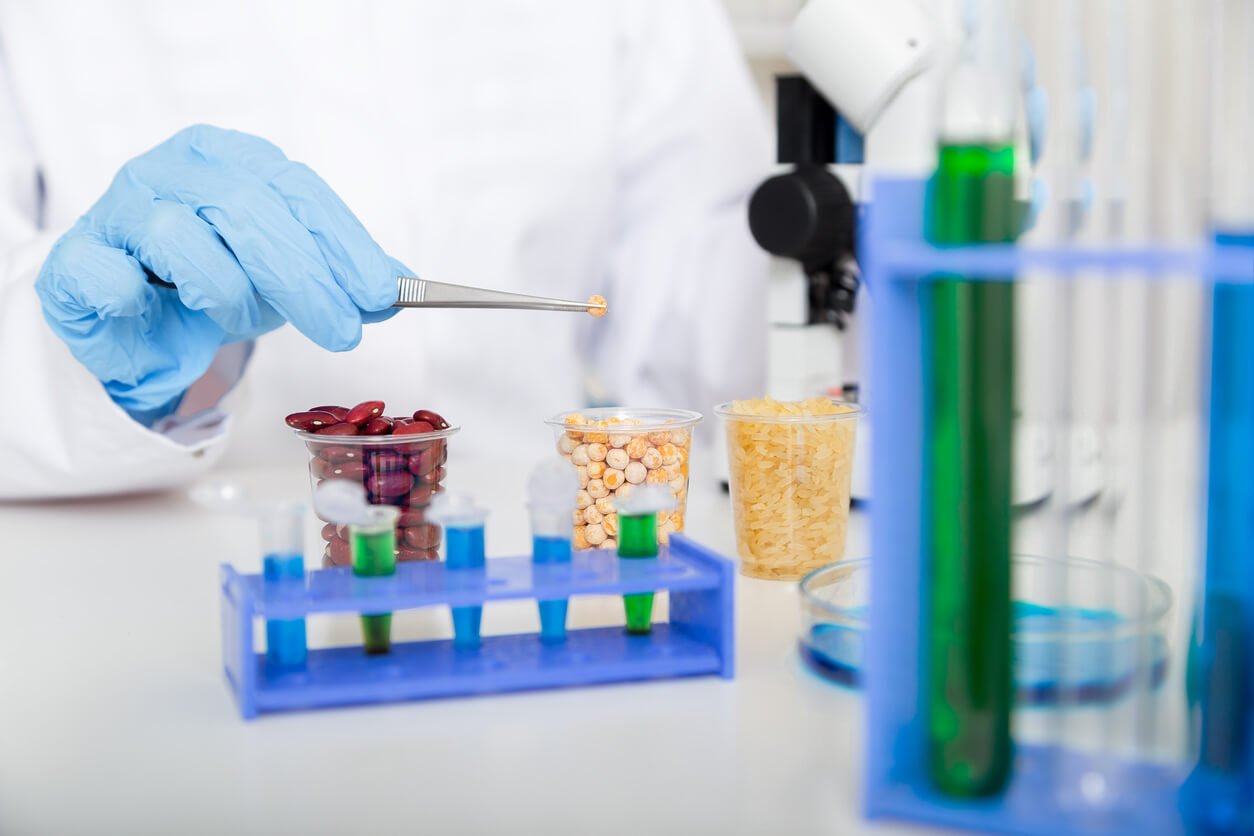
The term “GMO” — short for genetically modified organism — is often used interchangeably with “genetically engineered” or “bioengineered” when describing a food made using these ingredients. The US Food and Drug Administration defines a GMO as an organism (usually a plant or animal) produced through genetic modification. Typically this means inserting the genes of another species into a plant or animal. For instance, taking genetic material from a fish and adding it to a tomato to make it more cold-hardy (yes, that’s really been done), or inserting genetic material from a microbe into corn to make it resistant to herbicides.
The US definition of a GMO is as follows: “Those that contain detectable genetic material that has been modified through in vitro recombinant deoxyribonucleic acid (rDNA) techniques and for which the modification could not otherwise be obtained through conventional breeding or found in nature.” That’s a mouthful, and I challenge you to sing it to the melody of Gilbert and Sullivan’s “I am the Very Model of a Modern Major General.”
GMOs vs Hybrids
More simply put, genetic modification happens naturally, all the time, without interference from humans. And humans have also used practices like hybridization and selective breeding to nurture certain traits, like making a sweeter peach or a bigger squash, for hundreds if not thousands of years. Carrots weren’t even orange until the 1700s, tomatoes used to be marble-sized, and corn was once basically inedible unless you had titanium teeth.
But now we have a new practice of creating GMOs, in which lab scientists splice genes, often across the species barrier, to create what might even be considered new life forms. Unlike mules, these new bioengineered life forms breed in perpetuity. So if anything goes wrong, we can’t put the “gene”(ie) back in the bottle.
Bioengineered vs GMO
Officially, as of January 1, 2022, the term for this in the US became bioengineering (BE for short) — and for the sake of simplicity, we’ll also be using that term throughout this article. Although to be frank, it’s hard to see the shift to calling GMOs by this new name, bioengineered, as anything but a calculated ploy to undermine the efforts to see these foods clearly labeled.
What Are the Concerns Around BE foods?
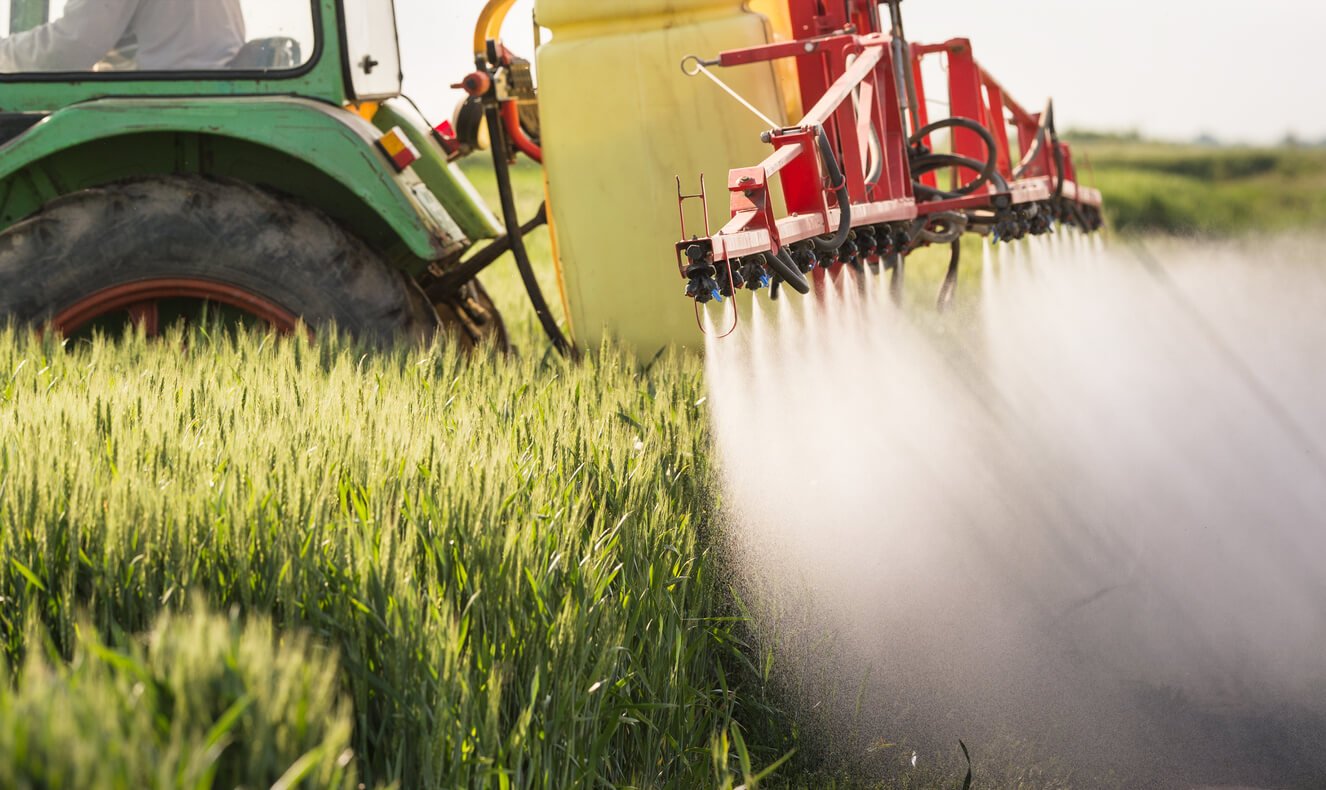
There are two main arguments against genetically modified food: potential health effects from consuming bioengineered foods, and potentially detrimental environmental impacts.
There’s currently no hard evidence of harmful effects in either domain, though it’s hard to know with certainty, because very little effort goes into looking for harm. As the saying goes, “Absence of evidence is not evidence of absence.” In other words, just because we haven’t found it doesn’t mean it doesn’t exist.
Nobody knows with certainty, because these are relatively new technologies, and there are no long-term studies. Bioengineered foods may be safe — and in fact, the American Medical Association, the National Academy of Sciences, the American Association for the Advancement of Science, and the World Health Organization all tell us that they probably are.
But many people express concerns about the potential risks. Some controversial studies link BE crops to toxic and allergic reactions in people; to sickness, sterility, and fatalities in livestock; and to damage to organs studied in lab animals.
Are Bioengineered Foods Safe?
So is the jury still out? Some would say it absolutely is, and we have a lot more to learn. Others would argue that it’s no longer an issue, that the case is closed, and that BE foods pose no inherent risk to the consumer.
Whether or not BE foods are safe in and of themselves, there’s another huge piece of this puzzle. With BE foods, we don’t just have to worry about what’s in the crops. We also have to worry about what’s on them.
Genetically Modified Herbicide-Resistant Plants
Most bioengineered foods on the market today are engineered for one reason: to withstand herbicide use. This means that farmers can use more and stronger herbicides to kill the weeds that compete with their crops without causing obvious damage to the plants themselves.
The most widely used herbicide in the world is Bayer’s (formerly Monsanto’s) Roundup, their trade name for a chemical whose primary active compound is glyphosate. When Bayer bought Monsanto in 2016 for $57 billion, Roundup was one of the most valuable assets they acquired. The company had come up with a fairly ingenious business model in which it genetically engineered seeds that were resistant to its famed herbicide.
Before the invention of genetically engineered Roundup Ready seeds, no one ever consumed a plant that had been sprayed with an herbicide, because to do so would have killed the plant. But now, thanks to genetic engineering, for the first time in history, an herbicide, Roundup, was being sprayed directly on food crops destined for human consumption. This created a historically unprecedented reality: The vast majority of us began consuming weed killer on a daily basis.
As Roundup became widely used on herbicide-resistant crops, Monsanto (now Bayer) came up with another discovery. They could spray Roundup on cereal crops that were not bioengineered, too — as a desiccant to dry the crop out and speed up the harvesting process. Never one to pass up an opportunity to make more money, the company promoted this idea enthusiastically to wheat, oat, and other cereal grain farmers. Now many non-organic grains may be sprayed with pesticides like Roundup, too.
Monsanto-Bayer’s Misleading ‘Studies’
Monsanto-Bayer and other biotech companies have stated these chemicals are safe. But most of the studies they use for validation are conducted by the company itself, using whatever methodology they deem desirable. And what’s more, they are known to have paid scientists to uphold their claims, giving rise to the elegant portmanteau “biostitute,” defined as “a biologist who lies for money.” In fact, in 2015 it was discovered that Monsanto had paid a scientist at Stanford University to allow their PR department to ghostwrite a Forbes magazine editorial under his name, arguing against the WHO’s decision to classify glyphosate as a probable carcinogen. If you’re in the skeptic camp, thinking, “Why would they have to bribe a scientist to lie if the truth were what they wanted us to believe,” I’m right there with you.
Monsanto-Bayer, it seems, has repeatedly crossed major ethical and potentially even legal lines in order to keep its product’s reputation from being undermined.
Bloomberg reports that the company “was its own ghostwriter for some safety reviews,” and an EPA official reportedly helped Monsanto “kill” another agency’s cancer study.
An investigation in Le Monde detailed Monsanto’s effort “to destroy the United Nations’ cancer agency by any means possible” to save glyphosate.
Reporter, Food Revolution Summit speaker, and former Reuters senior correspondent, Carey Gillam writes:
“Monsanto and its chemical industry allies have spent decades actively working to confuse and deceive consumers, farmers, regulators, and lawmakers about the risks associated with glyphosate-based herbicides. As they’ve suppressed the risks, they’ve trumpeted the rewards and pushed use of this weed killer to historically high levels.
The evidence that has come to light from Monsanto’s own internal documents, combined with data and documents from regulatory agencies, could not be more clear: It is time for public officials across the globe to act to protect public health and not corporate profits.”
What the Science Says About the Safety of Herbicides like Roundup
Pesticides are a class of products that includes insecticides, herbicides, and fungicides — all of which are biocides (meaning that they kill life). Insecticides target insects. Herbicides target plants. And fungicides target fungus.
Herbicide-resistant crops are genetically engineered to be resistant to certain herbicides which, not surprisingly, are manufactured by the very same companies doing the genetic engineering. While this may be a great business move for the companies involved, it presents a number of concerns for human health, the environment, and farmers themselves.
Health Effects of Genetically Modified Food Crops
Glyphosate
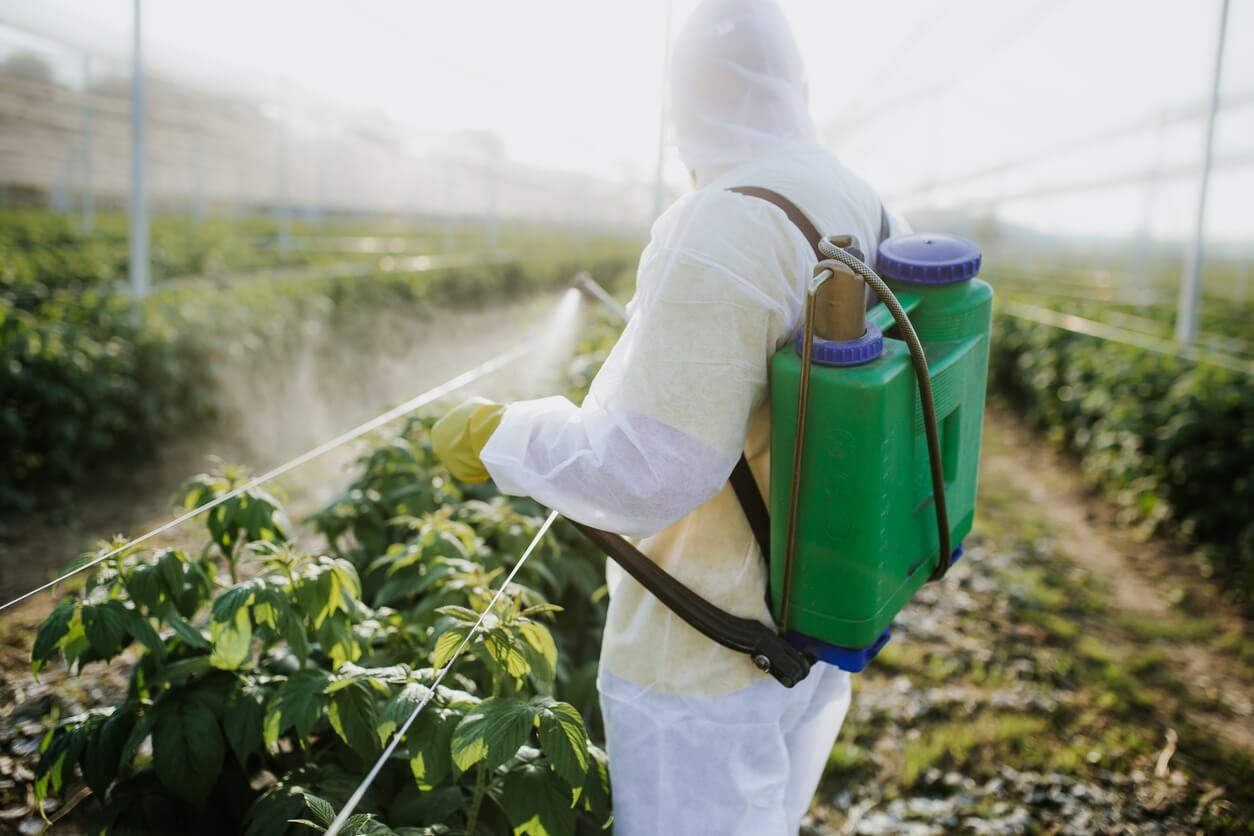
Independent research has found that glyphosate-tolerant plants accumulate glyphosate residues at unexpectedly high levels. And these residues are passed on to consumers when we eat them.
In 2015, the World Health Organization classified glyphosate as a probable human carcinogen, putting the weed killer in the same category as arsenic, asbestos, and infection with Kaposi sarcoma herpesvirus, one of the most virulent known herpesviruses. And recently, the state of California listed Roundup as being carcinogenic.
Subsequently, hundreds of lawsuits have been filed against Monsanto-Bayer by people alleging that their cancers resulted from exposure to Roundup. There have now been more than 100,000 such cases filed against the company by farmers, gardeners, groundskeepers, and more. In 2020, Bayer agreed to pay $10 billion in an attempt to settle these suits, but more are being filed almost every day. Bayer may have thought it was making a brilliant move when it bought Monsanto for $63 billion in 2018. But the value of Bayer fell by nearly $100 billion after the acquisition, perhaps entirely due to the legal exposures it acquired when it made this purchase.
Even when ingested below “safe” regulatory levels, glyphosate may still have concerning effects on health. For instance, it’s been observed to disrupt hormones and alter metabolic processes in the human body, as well as promote tumor formation.
And glyphosate is increasingly widespread. In 1987, only 11 million pounds of Roundup were used in the United States, but today nearly 300 million pounds of Roundup are applied each year.
In 2018, the Environmental Working Group released results of a report finding elevated levels of glyphosate in 31 out of 45 breakfast cereal samples tested. The contaminated samples included Cheerios, Quaker Oats, and other breakfast foods, and the quantities of Roundup could increase cancer risk for children.
Dr. Jennifer Lowry, head of the Council on Environmental Health for the American Academy of Pediatrics, said she was “shocked […] We don’t know a lot about the effects of glyphosate on children, and essentially we’re just throwing it at them.”
Glyphosate Could Affect the Liver
Glyphosate might also impair the function of the liver. A 2017 animal study published in the journal Scientific Reports found that with exposure to low, environmentally relevant doses of glyphosate-based herbicides, rats experienced signs of enhanced liver injury as well as notable biochemical changes. The rats actually developed non-alcoholic fatty liver disease and liver dysfunction as a result of chronic ultra-low dose exposure to glyphosate-based herbicides. (Our view on the use of animals in medical research is here.)
Glyphosate’s Impact on the Microbiome
There’s also some evidence that glyphosate consumption may impact the gut microbiome, or the balance of bacteria that live in your digestive tract, too. It turns out that glyphosate has been patented as an antibiotic by Monsanto-Bayer. And increasing numbers of scientists believe that this chemical may disrupt and kill beneficial bacteria in your gut, leading to impaired immune function and a cascade of other ill effects.
Other Herbicide-Resistant Crops

In addition to being engineered to be resistant to Roundup / glyphosate, many BE crops have also been engineered to be resistant to other herbicides. But these herbicides have serious problems, too.
Glufosinate: The use of Glufosinate in agriculture was banned in the EU as of July 2018, because of great concern around the risk of neurotoxicity and reproductive damage. However glufosinate-resistant corn, soy, rapeseed, and cotton are still being grown in the US and many other countries (and sprayed, not surprisingly, with glufosinate).
2,4-D: 2,4-D is one of the two primary compounds (along with 2,4,5-T) found in Agent Orange — the infamous chemical that was responsible for an estimated 400,000 deaths during the Vietnam war. The International Agency for Research on Cancer has named the weed killer a possible human carcinogen. Studies have also linked 2,4-D to endocrine disruption and disturbing estrogen, androgen, and thyroid hormones.
Dicamba: This pesticide poses an elevated risk for liver and intrahepatic bile duct cancer. The EPA actually canceled registration of three dicamba-containing pesticide products because they “have the potential to cause unreasonable adverse effects to human health.”
Environmental Effects of GM Foods
In addition to health concerns, the frequent and widespread use of herbicides that goes hand in hand with bioengineering also poses some alarming environmental risks.
For instance, glyphosate and other pesticides have been detected in soil, crop products, animals that feed on crop products, humans, fresh water, and the organisms that live there. So pretty much every part of the planet and ecosystem is now awash in these compounds whose sole function is to kill life. The release of glyphosate and other herbicides can be toxic and even lethal to fish, animals, pollinators, and a vast array of other life-forms.
And now that the spraying of nearly 300 million pounds of glyphosate are occurs on US crops each year (almost a pound for every person in the country), we have a new problem on our hands: herbicide-resistant “superweeds.” And these weeds aren’t just resistant to Roundup. This trend also occurs with Glufosinate, dicamba, and 2,4-D resistant weeds.
Not to be outdone by a bunch of pesky weeds, Bayer engineered crops that are resistant to five different herbicides all at once. So now farmers mix and match different herbicides — spraying more and more on our fields.
But all this herbicide use doesn’t just impact the targeted weeds. It winds up on the crops that are being grown, and it can also drift to other farms, whereupon the pesticides carried on the wind can damage any crops that are not engineered to withstand them. They can also impact genetic diversity and threaten the balance of life in the entire ecosystem.
Impact of BE Crops on Farmers

Bioengineered crops can have a major impact on small family farms. Traditionally, many farmers have saved their seeds every year, for planting the following year. But they aren’t allowed to save bioengineered seeds, because doing so amounts to “patent infringement.” Small farmers risk getting stuck in cycles of dependency, adopting practices like buying new seeds every year instead of saving their own, and buying herbicides that just happen to be made by the same companies that sell the seeds (ahem, Bayer).
The allure of being able to swiftly wipe out weeds from an airplane is real, and it can save farmers real money when compared to other weed control methods. But once hooked, the need for herbicides and herbicide-resistant crops to deal with weeds grows like any addiction — over time, farmers need to buy and apply more and more weed killers as herbicide-resistant superweeds develop. While it might be hard on some farmers, this business model is lining the pockets of major agribusiness corporations, who are also gaining an alarming degree of control over the world’s food supply. It’s a great business model for these companies and for mega monocrop farms, but it has painfully negative effects on self-reliance and local family farms.
Farmer Suicides
It’s also concerning for farmers who are already struggling for a number of other reasons, including the impacts of climate change, increasing debt, and plummeting prices. While it’s not often discussed, suicide rates for farmers have increased by 40% in the last two decades, thanks largely to these kinds of factors. In fact, farmers are now among the most likely to die by suicide, compared to other occupations. A 2017 paper discusses how the increased role of biotechnology has led to an increase in suicide among Indian farmers, citing the monopolization of genetically engineered seeds, centering on patent control, application of terminator technology, marketing strategy, and higher production costs.
Pesticide Exposure of Farmers & Families
Plus, pesticide exposure from pesticide-tolerant BE crops is also impacting farmers, farmworkers, and their families. As even low dose exposure to these chemicals can be harmful, especially to children, a constant daily exposure could have serious health effects and long-term health outcomes.
Other Types of BE Crops
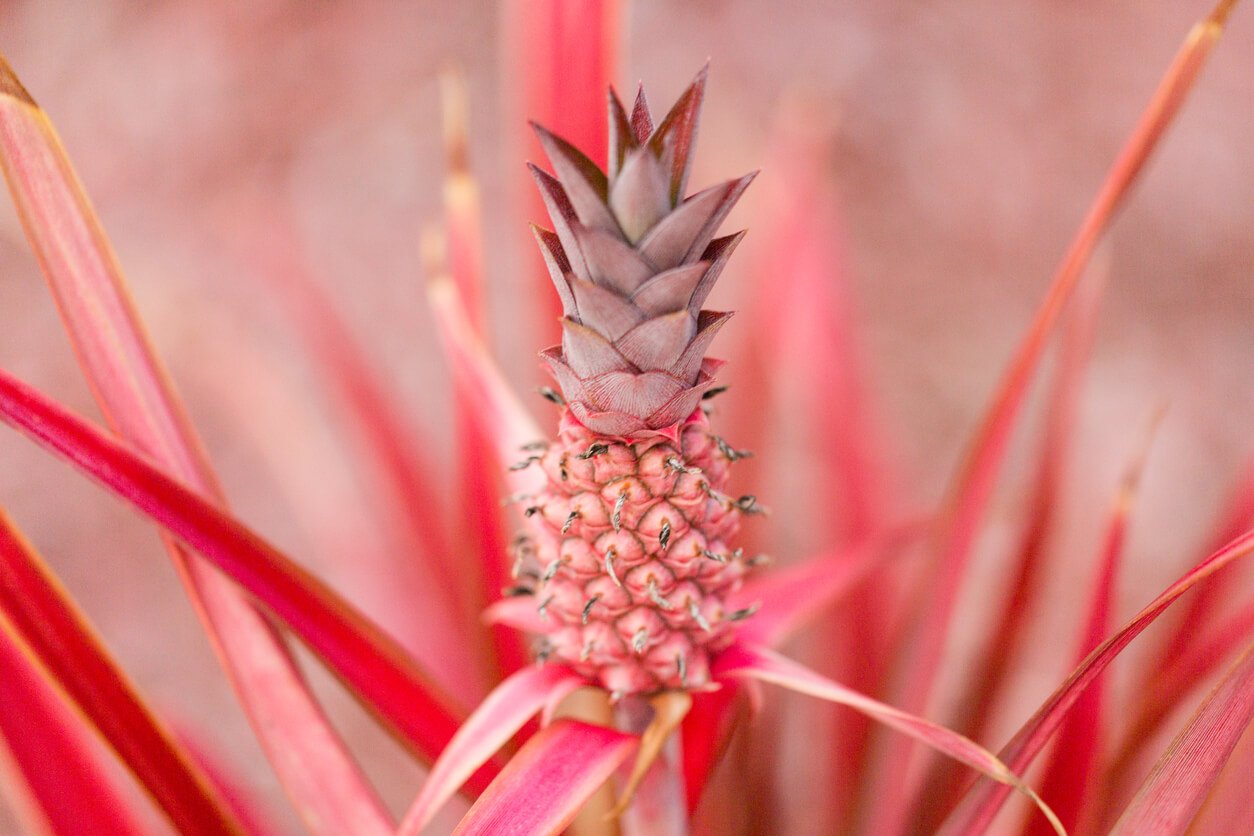
Now that we’ve talked about pesticide-tolerant BE crops, what about the other varieties? These are the foods you’re more likely to see in the produce section.
Some of these have the potential to actually save farmer livelihoods. For instance, SunUp, also known as Rainbow, papayas were created to combat the papaya ringspot virus, which nearly wiped out papayas in Hawaii altogether. There aren’t known health dangers with these papayas, though as with other BE crops, there also hasn’t been any long-term study done.
Additionally, food storage can be more efficient with certain types of BE crops. For example, BE squashes seem to have greater resistance to chilling and oxidation than other forms of squash. BE technology also suppresses ethylene biosynthesis in Pinkglow pineapples to prevent early flowering and improve shelf life. This may promote more uniform growth and development of the pineapple plant to aid fruit production, harvest, and quality.
Are BE Crops More Nutritious?
In general, BE crops have similar nutritional profiles to non-BE crops — with a few exceptions.
In tests Monsanto conducted soon after the release of Roundup Ready soybeans, BE soy contained 29% less of the brain nutrient choline, and 27% more trypsin inhibitor, a potential allergen that interferes with protein digestion, than normal soybeans. Soy products are often prescribed and consumed for their phytoestrogen content, but according to the company’s tests, the genetically altered soybeans had lower levels of phenylalanine, an essential amino acid that affects levels of phytoestrogens. And levels of lectins, which are frequently allergens, were found to be nearly double in the modified variety.
What might be happen from consuming soybeans containing higher levels of trypsin inhibitor and lectins? At the very least, slower growth in children. And possibly, unexpected and even dangerous allergic reactions.
So far, it appears that, in general, BE foods aren’t more allergenic than their conventional counterparts, and no compelling data exist that consumption of BE proteins causes an allergy to a particular food in individuals who don’t already have an allergy to that food. A 2011 study concluded that there was no enhanced risk of food allergy from the proteins found in BE papayas. But Monsanto-Bayer and the other companies who have brought us genetically engineered food are notorious for hiding data from the public, particularly data that finds problems with the products that their business depends on selling as widely as possible.
How Can You Avoid GMOs?
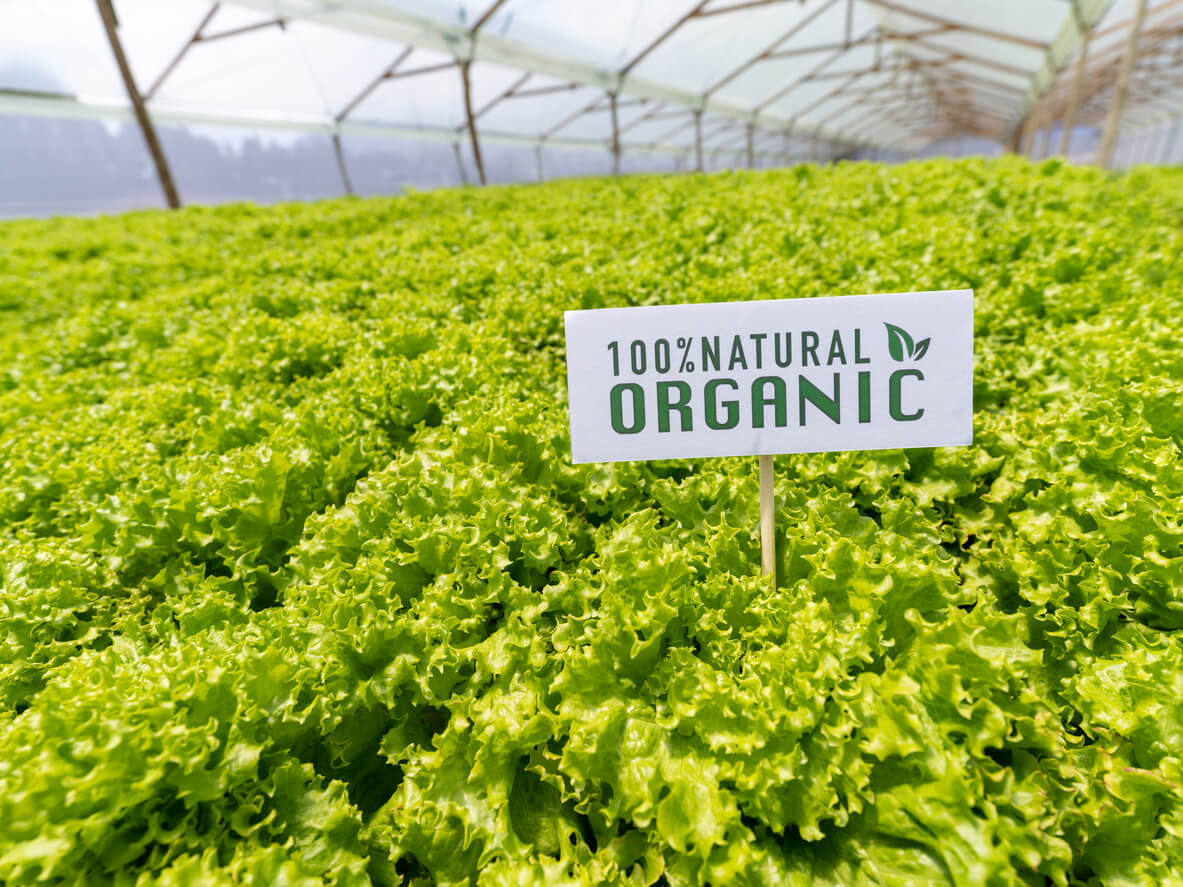
Organically grown foods are, by definition, non-BE and grown without the use of glyphosate. In addition, certified organic livestock farmers can’t give their animals BE feed. So if you want to avoid BE foods and glyphosate, choosing organic is more important than ever.
(Find out more about the difference between non-GMO / non-BE and organic food labels here.)
But not everyone can afford to go organic. If that’s the case for you, it may be comforting to know that most fruits and vegetables are still not being genetically engineered or sprayed with glyphosate. Also, it can help to know which non-organic foods are likely to contain them.
List of GMO Foods
The major crops that are GMO or bioengineered are:
- Corn, much of which is fed to livestock and used for ethanol for our cars but also to make many refined foods. In 2017, 32% of all global corn production was bioengineered, most of which was field corn for animals. As for sweet corn, an estimated 10-25% grown in the US is BE.
- Soy, also often turned into animal feed, though much of it is processed and eaten by people in the form of refined foods. BE soybeans make up more than 80% of total soybean production in Argentina, Brazil, Bolivia, Canada, Costa Rica, Mexico, Paraguay, South Africa, the US, and Uruguay.
- Sugar beets, which supply about half the sugar in the US, and almost all of which are bioengineered (though cane sugar is not bioengineered).
- Rapeseed, which is used for canola oil. Most of the rapeseed grown in North America is bioengineered.
- Alfalfa, used primarily as animal feed.
- Cotton, mostly used for clothing as well as for cottonseed oil.
In addition, the BE versions of the below crops occupy a smaller share of acreage — but anyone wanting to avoid BE foods needs to be aware of them, too:
- Apples: The apple varieties most commonly bioengineered include the Arctic types of Granny Smith, Golden Delicious, and Fuji that come out of the US and Canada.
- Papayas: This sweet tropical fruit should be presumed to be BE when produced in the US, but BE varieties are also grown in China and Canada.
- Pineapples: Pinkglow pineapples, grown in the southern region of Costa Rica, have been bioengineered to have pink inner flesh. These are currently only available in Canada and the US, with the exception of Hawaii (because the state prohibits the importing of pineapples).
- Potatoes: Some Atlantic, Ranger Russet, Russet Burbank, and White Russet varieties available in the US and Canada are BE. Additionally, known BE brands of potatoes include Innate, New Leaf Russet, Shepody New Leaf, Hi-Lite New Leaf, Atlantic New Leaf, and Superior New Leaf.
- Salmon: Only farmed salmon, not wild-caught salmon, has the potential to be bioengineered. The AquAdvantage varieties are the main BE salmon available in the US and Canada. They are not necessarily labeled.
- Squash: Some varieties of summer squash in the US and Canada, like green zucchini, yellow straightneck, and yellow crookneck squash, are bioengineered.
GMO Food Additives
Also keep in mind that corn and soy, in particular, are used as the raw ingredients for all sorts of food additives.
These include:
- Aspartame, sodium ascorbate, and vitamin C,
- Citric acid, sodium citrate, ethanol, and natural flavorings,
- Artificial flavorings, high fructose corn syrup, and hydrolyzed vegetable protein,
- Lactic acid, maltodextrin, monosodium glutamate, and
- Sucralose, textured vegetable protein (or TVP), and xanthan gum.
If a product isn’t certified organic or certified non-GMO or non-BE, and if it has more than a few ingredients, there’s a pretty good chance that it contains bioengineered ingredients.
Is Labeling Required for GMO or BE Foods?

In the US, a national BE labeling law went into effect on January 1, 2022. The law passed in 2016 as a federal response to state-level labeling campaigns for GMO foods.
The law mandates that foods that contain BE ingredients must disclose so with “bioengineered” on the package.
But there are some pretty big loopholes in this law. For one thing, companies that use BE ingredients also have the option to simply post a phone number that consumers can call for that information (since we all love making calls about every item we buy while in the grocery store!), or a scannable QR code (which effectively discriminates against people who don’t have access to a smartphone or fluency in the use of QR codes).
Another loophole is that the USDA sets an exemption threshold at 5% of “unintended” genetically engineered ingredients. (In the European Union, the standard is markedly lower at 0.9%.) Peter Lurie, president of the Center for Science in the Public Interest, says that this leaves consumers “not knowing if it’s not present or if a food company just chose not to disclose.”
You may have heard of the Non-GMO Project, which is a 501c(3) nonprofit organization offering independent product verification for GMOs. If you truly want to avoid GMO or BE foods, your safest bet is to look for foods that are certified organic, and/or that are Non-GMO Project Verified.
Are Non-GMO Foods Healthier?
A word of warning: Just because something is non-GMO does not make it healthy. It could still be loaded with processed ingredients, and grown with glyphosate and other pesticides. Heck — there are even non-GMO Cheetos. And they still aren’t an especially healthy food.
Avoid Factory Farmed Animal Products
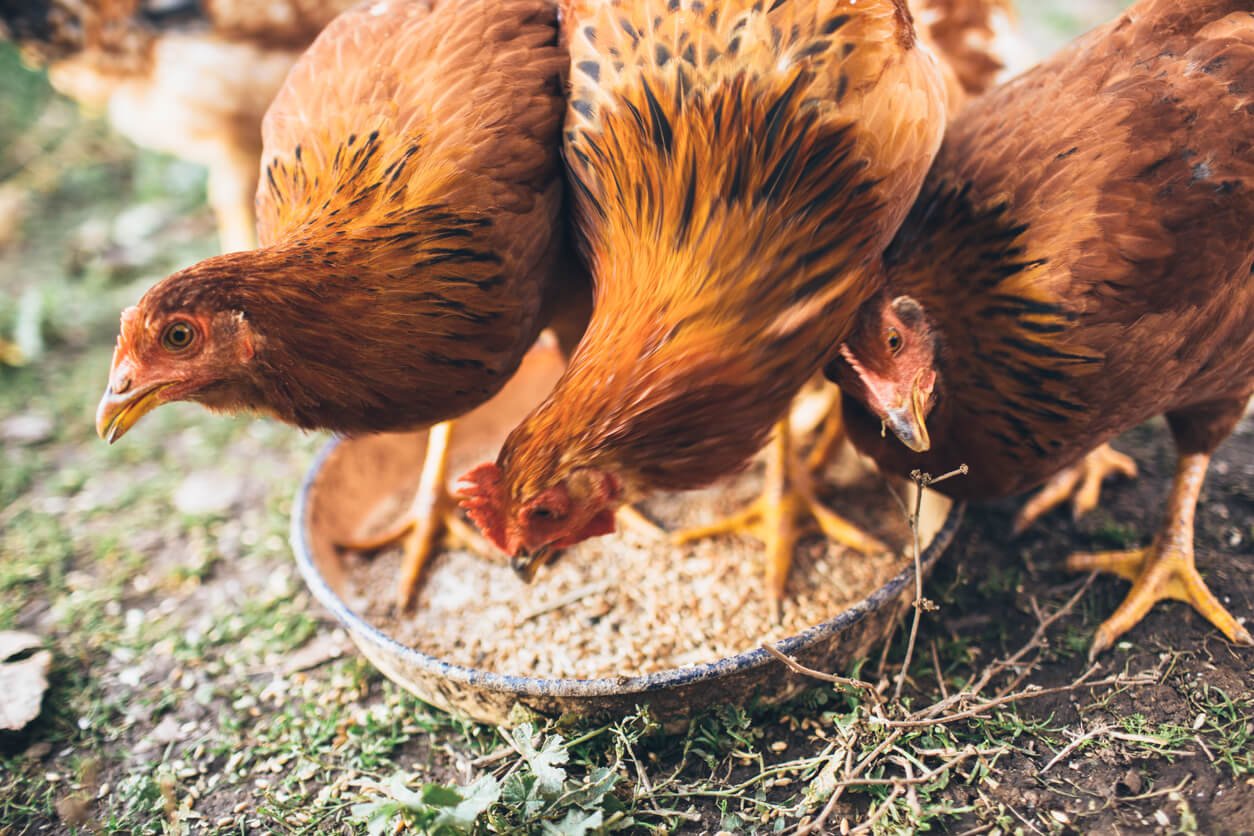
More than 95% of BE crops become part of the feed for animals like cows, chickens, and farmed fish. So even if you’re paying attention to BE labeling and/or choosing organic when it comes to your produce, any animal products in your diet, unless they’re certified organic, are still likely to be directly linked to bioengineering.
Although BE supporters claim that research shows the ingestion of BE crops by livestock doesn’t have an effect on the health of the animals, nor is it transferred via human consumption, these studies are often seriously tainted by conflicts of interest.
For example, a 2014 study published in the Journal of Animal Science explicitly makes statements like, “…there are no detectable or reliably quantifiable traces of GE components in milk, meat, and eggs following consumption of GE feed,” yet the study got support from a Kellogg grant as well as state-funded agricultural research.
And another study, published in the journal Animal Frontiers in 2017, makes bold claims in support of GMOs in animal agriculture, including:
- GMO crops have been widely adopted by growers and are a significant source of feed for animal agriculture.
- Most GMO crops used for animal feed do not change their composition or nutritional value for animals.
- Feeding GMO crops to livestock does not result in their detection in meat, milk, or eggs.
- GMO crops help reduce greenhouse gases and use of agricultural chemicals, and increase how much money a farmer makes.
- GMO crops provide better pest protection and weed control, which increases yields and preserves more land for wildlife and biodiversity.
The kicker? The author works for Monsanto-Bayer, as evidenced by his monsanto.com email address.
More Research Is Needed on BE Feed
But the truth is that due to the differences in the anatomy and eating habits of livestock, it’s impossible to fully evaluate the safety of BE feed with a single test. More research is needed to know with confidence. But that research needs to be unbiased. And if it’s funded by the biotech companies, it probably isn’t.
And what doesn’t need more research is a simple reality: BE feed crops go hand in hand with glyphosate and other herbicides. The more livestock we raise on these crops, the more herbicides will be turning up in our rivers, streams, groundwater, air, and bodies. If you want to say “no” to glyphosate, the #1 thing you can do is to eat less (or no) grain and soy-fed animal products.
Stay Skeptical About GMOs
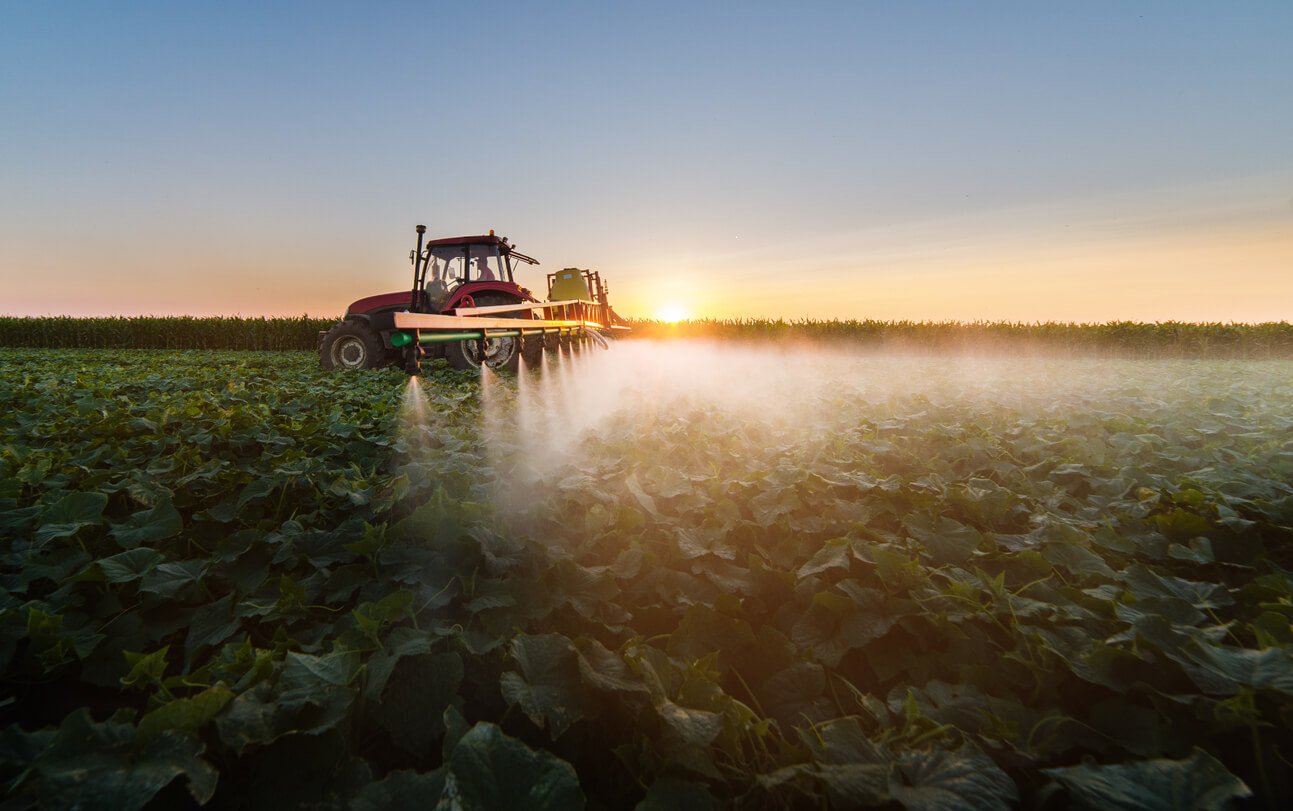
Way back in 1999, Rachel’s Environment and Health Weekly, published by the Environmental Research Foundation, noted:
“Neither Monsanto nor any of the other genetic engineering companies appears to be developing genetically engineered crops that might solve global food shortages. Quite the opposite. If genetically engineered crops were aimed at feeding the hungry, then Monsanto and the others would be developing seeds with certain predictable characteristics:
- Ability to grow on substandard or marginal soils;
- Plants able to produce more high-quality protein with increased per-acre yield, without the need for expensive machinery, chemicals, fertilizers, or water;
- They would aim to favor small farms over larger farms;
- The seeds would be cheap and freely available without restrictive licensing; and
- They would be for crops that feed people, not meat animals.
None of the genetically engineered crops now available, or in development (to the extent that these have been announced) has any of these desirable characteristics. Quite the opposite. The new genetically engineered seeds… produce crops largely intended as feed for meat animals, not to provide protein for people. The genetic engineering revolution has nothing to do with feeding the world’s hungry.”
Meanwhile, the pesticides used on herbicide-tolerant BE crops have documented and alarming negative effects on people and the planet, based on independent studies. If you choose to avoid BE crops, the best ways to do so are by buying organic, reading food labels, and minimizing or avoiding your consumption of animal products.







